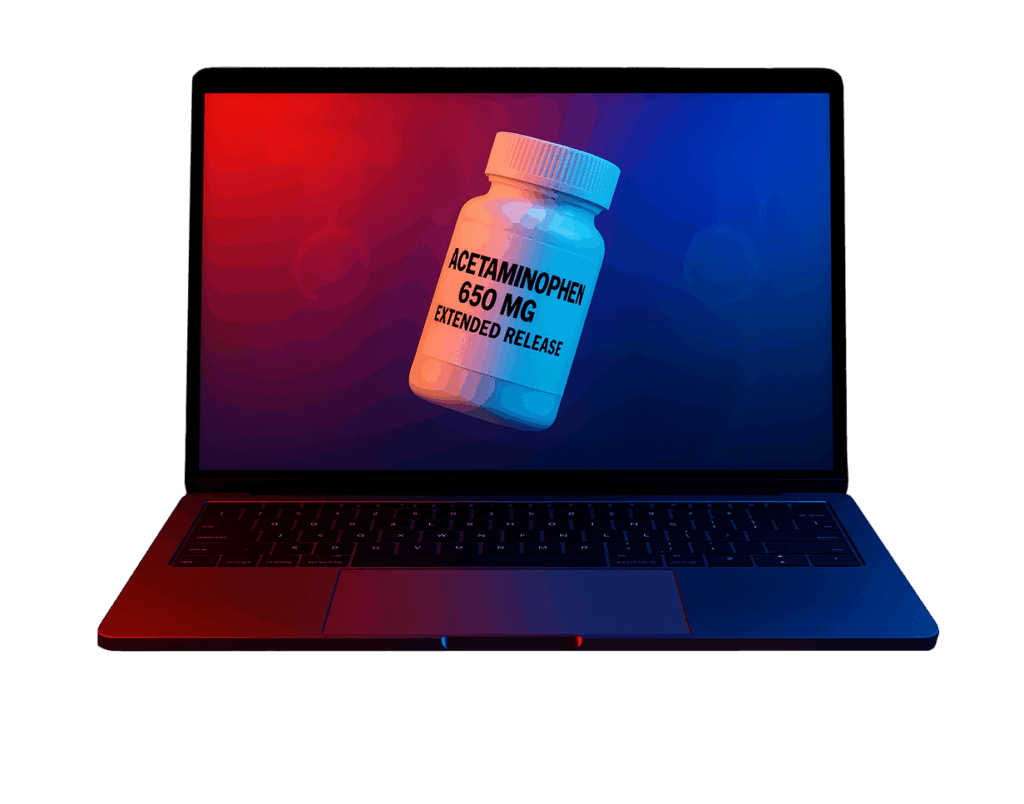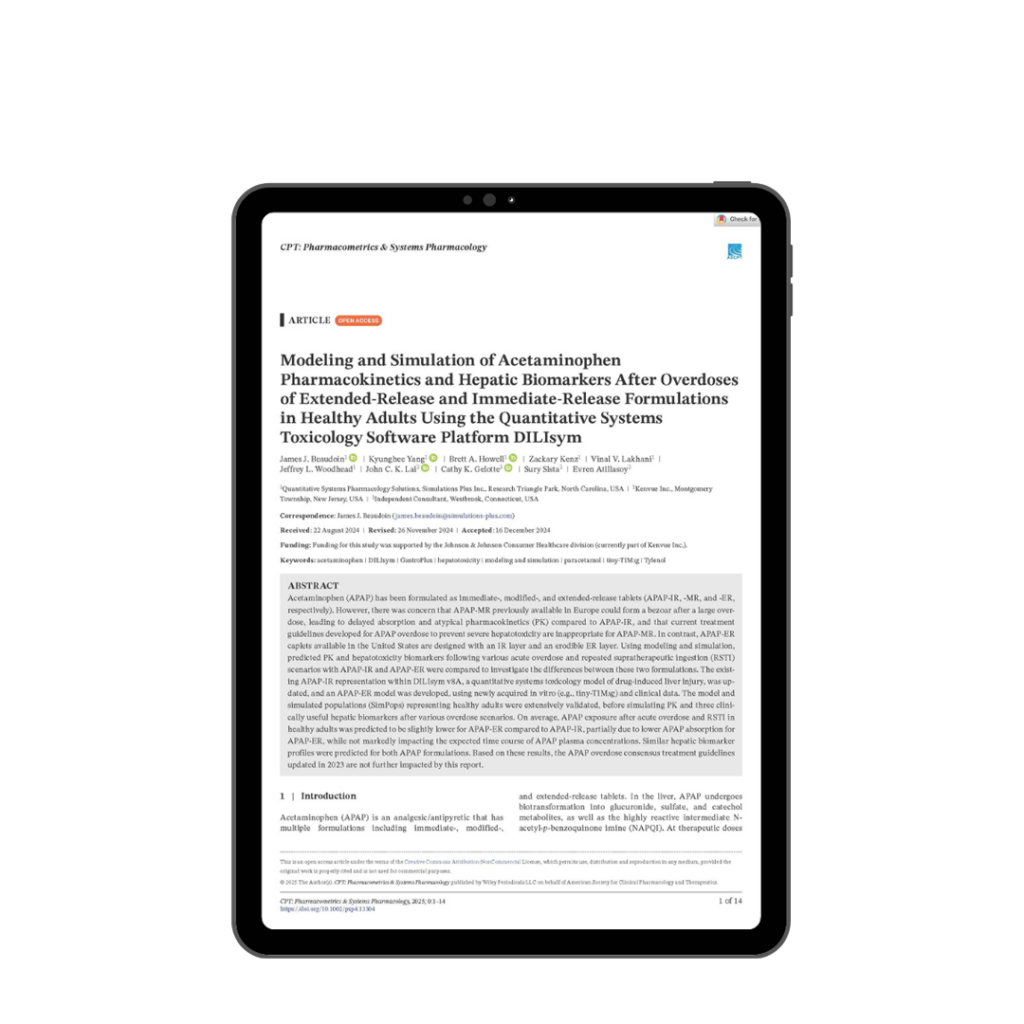Acetaminophen (APAP) has been on the market for many years, but concern developed that a modified-release (MR) formulation previously available in Europe could have delayed absorption contributing to atypical pharmacokinetics after a large overdose.
Researchers wanted to compare overdose outcomes between the immediate-release (IR) formulation of APAP and an extended-release (ER) formulation that is available in the United States, which consists of an IR layer and an erodible ER layer. This comparison would allow for a better understanding of the nature of the two formulations and if updates were potentially needed to APAP-ER overdose treatment guidelines.

Researchers chose to utilize DILIsym®, a quantitative systems toxicology modeling and simulation platform, in conjunction with in vitro data from InnoGI Technologies’ tiny-TIMsg and clinical data to model and simulate APAP pharmacokinetics and hepatotoxicity biomarkers in a validated healthy adult simulated population (SimPops®) following various overdose scenarios.
After acute overdose and repeated supratherapeutic ingestion (RSTI) scenarios, simulated APAP exposure and hepatotoxicity biomarker responses were not markedly different between APAP-IR and APAP-ER. On average, APAP exposure in healthy adults was predicted to be slightly lower for APAP-ER compared to APAP-IR, partially due to lower APAP absorption for APAP-ER.
Based on these simulation results, the existing overdose treatment guidelines for APAP were deemed appropriate, and not further impacted.


Read the open-access publication in CPT: Pharmacometrics & Systems Pharmacology, the official journal of ASCPT:
“Modeling and Simulation of Acetaminophen Pharmacokinetics and Hepatic Biomarkers After Overdoses of Extended-Release and Immediate-Release Formulations in Healthy Adults Using the Quantitative Systems Toxicology Software Platform DILIsym”
